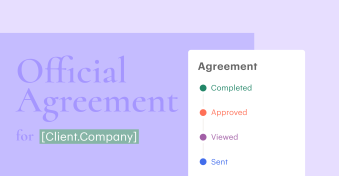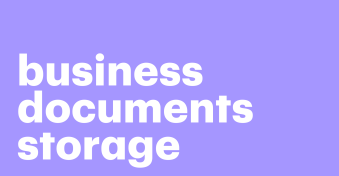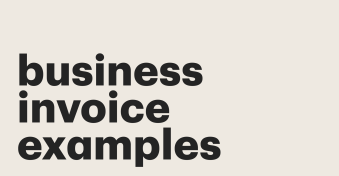There are many types of business reports out there: standard business reports, formal business reports, etc.
Efficient reporting is critical in helping organizations shift through data and make major business decisions.
The quality of the reports themselves is as fundamental as the ability of those tasked with communicating what’s in them.
When a company decides to launch a new product, expand into new markets, reduce expenses, improve customer service, or increase its social media presence, the decisions are usually based on information submitted in reports.
What does this mean for you and your team?
Well, we’ve narrowed down seven essential business reports every startup and SME should understand inside and out and provided a brief explanation of why each is important. So strap in — let’s get to it!
Key takeaways
- A business report is a formal document presenting information, analysis, and recommendations to aid decision-making within an organization. Business reporting involves the systematic process of collecting, analyzing, and disseminating relevant information to support informed business decisions.
- Business reports are crucial for informing decision-making, providing data-driven insights, and facilitating effective communication within organizations.
- There are seven types of business reports that cater to many communication needs, from in-depth analyses to concise updates, using formats such as narratives, visuals, and data-driven presentations.
What is a business report and business reporting?
Looking for a good business report definition? Well, a business report is a document that collects figures and provides detailed analyses of the business’s situation.
This document type is essential for companies because it allows them to meet two fundamental objectives.
First, business reporting addresses a specific issue or problem at a time when decisions must be made critically.
Next, an activity report presents the findings of the issue or problem encountered and proposes the appropriate course of action that the organization should take.
The benefits of business reports for your organization
Writing out an activity report is sometimes a difficult exercise that can become time-consuming due to the level of detail required; however, business reports are actually very useful for several reasons:
- Forecasts for better budget planning are easier to execute.
- Facilitates inter-departmental collaboration and decision-making by getting everyone on the same page.
- Improves transparency and accountability for the different departments by providing a (digital or actual) paper trail.
For managers, it is essential to have relevant, well-written activity reports to guide the company’s operation and make important decisions.
7 types of business reports: examples to keep you fully informed
Now that you know more about the types of reports in business, here is a list of the most common report types, including informational, analytical, research, marketing, annual, and progress reports.
Learn more about what they are and how to use them for your business to drive decision-making, performance monitoring, and stakeholder communication.
1. Informational reports
Informational reports provide facts and data only and do not present any analysis or recommendations.
For this type of business reporting, writers collect and organize information but do not analyze the facts for readers.
Here are some situations where businesses use informational reports:
- A trip report describing an employee’s visit to a trade show is informational.
- Weekly status reports about an ongoing project are also informational.
- Monthly sales reports, progress updates, and legal compliance reports are also considered informational reports.
2. Analytical report
An analytical report is a corporate report that examines data, provides conclusions and makes recommendations to enable stakeholders to determine the best course of action.
To help illustrate this more clearly, here are some examples of analytical reports:
- If you are writing a criteria comparison report to evaluate multiple locations for a new automotive manufacturing plant, you will compare the sites factoring in how they stack up with one another using the same parameters and then make a recommendation.
- A report analyzing a new technology’s impact on a business sector’s productivity and profitability is another example.
Other reports that provide recommendations are feasibility studies (e.g., for expansion opportunities) and justification reports (e.g., for equipment purchases or procedural changes).
3. Research report
This document presents the findings and analysis of a research study conducted on a particular topic. The report must follow a specific methodology to analyze the data.
- For example, marketing teams can send surveys to customers to learn more about their buying behavior before launching a new product.
- Research that seeks to understand competitors in the industry, growth potential, and market prospects would also be considered a research report. Make life easier with this business report template.
4. Marketing report
The main objective of a marketing report is to evaluate the performance of the marketing campaigns implemented by your team.
By doing so, the report gathers all the KPIs of your marketing channels and summarizes them to evaluate their effectiveness.
By analyzing metrics such as SEO, social media, customer engagement, and more, the marketing report gives you a good overview of which strategies are working and which can be replaced or improved. Use this business report template.

Growth Marketing Plan Template
Used 5224 times
Looking to boost your business growth? Our Growth Marketing Plan Template can help!
Use this template5. Annual report
This type of report is mainly used by listed companies or nonprofits and presented to show shareholders the activity and financial health of the business or organization during the year.
The initial section of an annual report typically presents an overview of the company’s operations throughout the year, including a detailed analysis of its financial performance and strategic initiatives.
In addition, it may include short and medium-term forecasts outlining the company’s anticipated goals and objectives for the coming year.
The second part focuses on the financial statement of the business. It comprises different financial reports and graphs indicating the costs of operations, turnover, profit margin, etc.
You can use the pre-built template courtesy of PandaDoc if you need to fill out an annual report.
Choose from a library of business report templates to find the perfect one for you.
6. Explanatory report
The main purpose of this type of report is to explain a complex subject in a way that everyone can understand.
This type of report can take many forms, such as instructional manuals, user guides, or informational brochures.
- For example, medical companies need to make explanatory reports to allow the largest number of people to understand how the drugs work step by step and their effect on the body.
- Manufacturers of industrial machines must also create technical and instructional documents that are easy to understand.
7. Progress report
A progress report is exactly what it sounds like — measuring progress (or the lack thereof).
This document explains how far you’ve gone toward completing a project.
Such a report is typically written for a supervisor, colleague, or client.
You might write it on behalf of or by working with your teammates to produce a progress report.
For example, you might need to produce a progress report once a week or monthly or as a completed percentage of project milestones (25% done, 50% complete, etc.)
How does a business report format look?
Well, that all depends on what type of business report you are looking to write. The best business report format is concise and tailored to the audience’s needs.
The format usually includes a title page, executive summary, main findings with supporting data, and clear recommendations.
Whatever the type of business report you have in mind, clarity, logical organization, and relevance to the report’s purpose are important for a format that works.
Here are two business report format examples:
1. Financial performance report example
Title Page
[Your Company Name]
Financial Performance Report
[Date]
Table of Contents
Executive Summary
‘This report provides an overview of [Your Company Name]’s financial performance for the fiscal year [Year]. Key highlights include a [percentage] increase in revenue, a [percentage] improvement in net profit margin, and a robust cash position.’
Introduction
‘The purpose of this report is to analyze and communicate the financial performance of [Your Company Name] over the past fiscal year, identify strengths and weaknesses, and provide recommendations for future financial management.’
Financial Statements:
Income Statement
Balance Sheet
Cash Flow Statement
Include detailed financial statements with comparative data from previous periods.
Financial Ratios
Trend Analysis
‘A trend analysis of key financial metrics over the past three years indicates a consistent upward trajectory in revenue and a steady improvement in profitability.’
Industry Benchmarking
Key Financial Indicators
Areas of Improvement
Risks and Mitigation
Conclusion and Recommendations
‘In conclusion, [Your Company Name] has shown strong financial performance, but areas for improvement include [specific areas]. Recommendations include [actionable steps] to enhance financial sustainability and growth.’
2. Market research report example
Title Page
[Your Company Name]
Market Research Report
[Date]
Table of Contents
Executive Summary
‘This market research report provides insights into current market trends, consumer preferences, and competitive landscape to guide strategic decision-making for [Your Company Name].’
Introduction
‘The objective of this report is to analyze the market landscape, identify opportunities for growth, and understand the competitive challenges faced by [Your Company Name].’
Market Overview
‘A detailed analysis of the current market size, growth projections, and key market segments reveals [important findings].’
Target Demographics
Competitive Analysis
Consumer Preferences
‘Survey results and consumer feedback highlight [key consumer preferences], providing valuable insights for product development and marketing strategies.’
SWOT Analysis
‘A SWOT analysis identifies the strengths, weaknesses, opportunities, and threats faced by [Your Company Name] in the current market context.’
Recommendations
‘Based on the findings, recommendations include [specific strategies] to capitalize on identified opportunities and mitigate potential threats.’
PandaDoc templates help your team deliver fast, professional business reports with ease
So, there are many different types of business reports out there, and understanding the various types is essential for effective communication within organizations.
Whether it’s presenting financial performance, analyzing marketing trends, or tracking project status, each type of business report serves a unique purpose in conveying information to stakeholders.
Choosing the right format and structure for a business report means that key insights are communicated clearly, making informed decision-making easier.
As businesses continue to evolve, the ability to produce and interpret diverse reports is becoming a more and more valuable skill.
7 of the ways PandaDoc can deliver fast and efficiently
- Write your business reports: With almost 1000+ pre-built templates, you can create a document and save time.
- Share documents in minutes: Drag-and-drop editing helps you build documents fast, allowing you to customize your dynamic versions.
- All-in-one tool: Software for creating, managing, tracking, and e-Signing documents.
- Review confidently and quickly: Get real-time access to approvals, comments, and version tracking. Smart features like variables and conditional logic help you eliminate document errors.
- Connect every part of your business: Keep data consistent with native CRM integrations that streamline your entire document workflow. All without leaving the applications you’re already working in.
- Maintain compliance and control: Improve security and trust with built-in legally binding e-Signatures. Create pre-approved templates and content blocks and lock all legal information to prevent costly mistakes.
- Streamline all your document workflows: With features to help you craft your own proposals, quotes, contracts, eSignatures, forms, and payments, you can’t go wrong with our software.
So, why not request a demo or start a free 14-day trial today?
Disclaimer
PandaDoc is not a law firm, or a substitute for an attorney or law firm. This page is not intended to and does not provide legal advice. Should you have legal questions on the validity of e-signatures or digital signatures and the enforceability thereof, please consult with an attorney or law firm. Use of PandaDoc services are governed by our Terms of Use and Privacy Policy.
Originally published May 25, 2023, updated August 6, 2024




